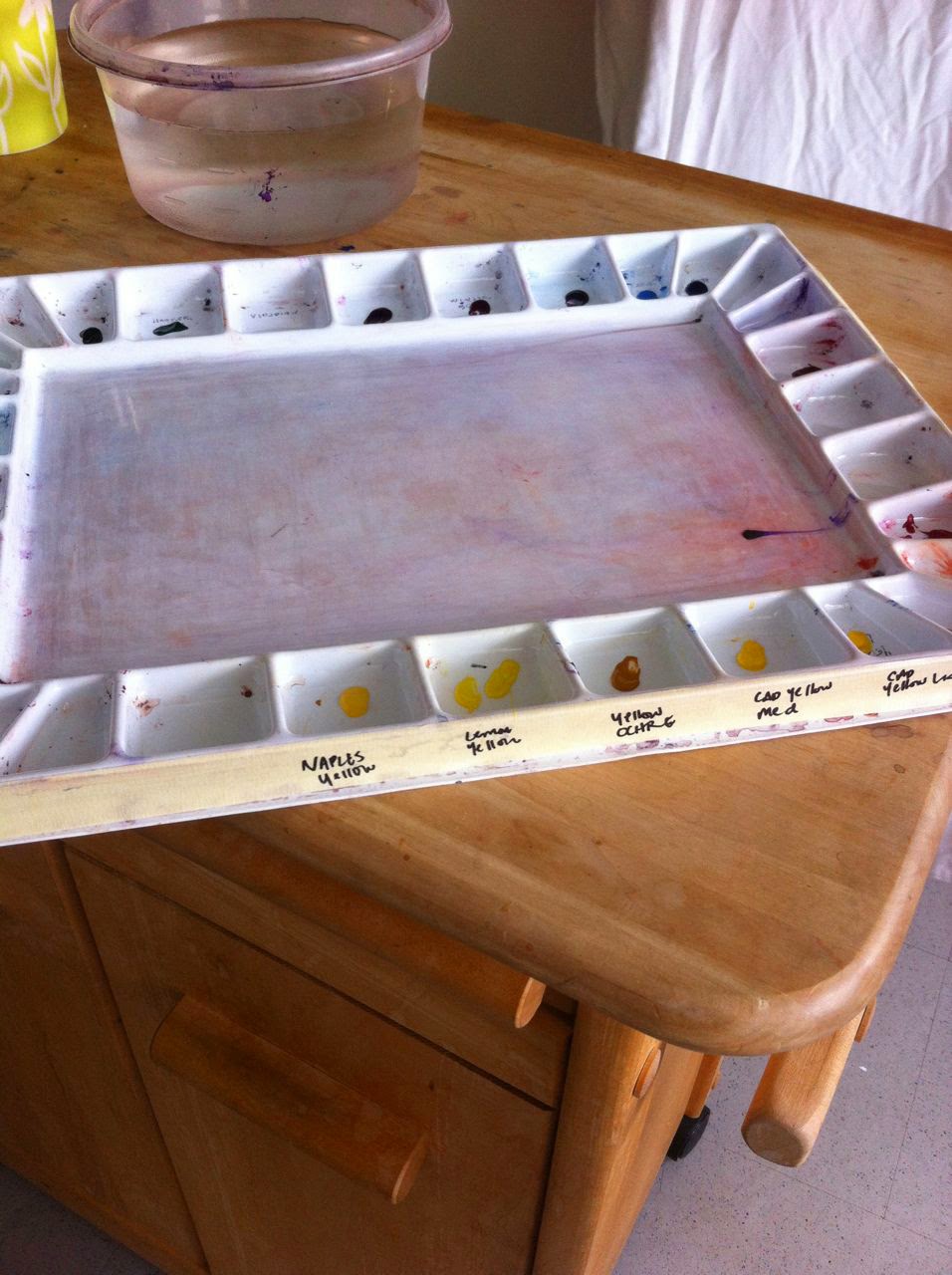I started my painting career using butcher blocks. They have no wells at all, so the paint moves freely. It takes some getting used to, but it's a nice palette for a beginner. Just dab paint around the edges, and the surface of the block lets the water move nicely around the pigment.
Here I show two different sizes. I have a variety of projects going at once, and would go back and forth between palettes. Once the paint is dried, don't discard it. You can just add water at your next session and begin again.
When
I started working with students, I introduced them to these palettes,
and they found them to be too messy. So I purchased some standard
palettes with wells and slanted inserts for the water.
The pigment and water tends to pool up in the middle of the plastic, so I prefer the metal of the butcher palette. However, you need to experiment to see which palette works best for your way of working.
I purchased this Jones Palette two years ago, worked with it for a few
months and went back to my butchers block. Now I have cleaned out the
palette and am using it for a new painting, one that required me to test
several paint samples.
I had originally written the names of the color in permanent ink at the bottom of each well. And pre-filled them with colors I thought I would use. I don't work like that now.
So I went back to this palette, and cleaned it out. It's easy after it's dry. The try is bendable (be careful, they crack) and you can take a butter knife and ease out the hardened paint.
Here I am lifting off a large chuck on hooker's green. And I proceeded to clean out the rest of the palette the same way.
Then, instead of labeling the wells on the inside (since I will be changing my color palette more frequently) I put masking tape around the edges and labeled from the outside.
There are so many different palettes out there. Sometimes I just use a scrap piece of watercolor paper as a mini palette, then I can test the color as I work. It's great to have many on hand, and see what works best. I'm trying to be more organized, and this example has helped.














